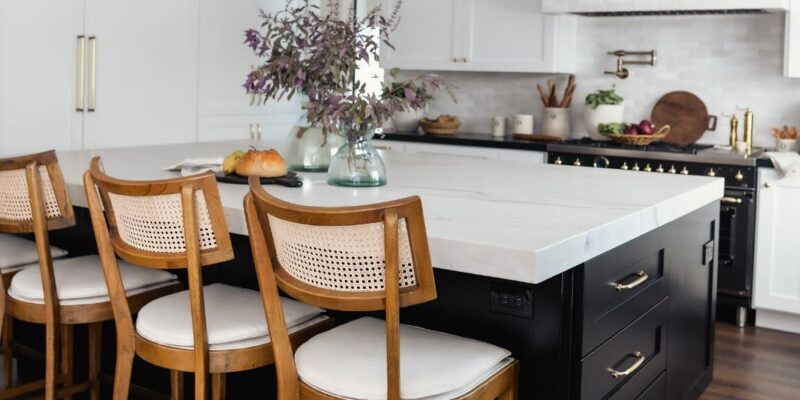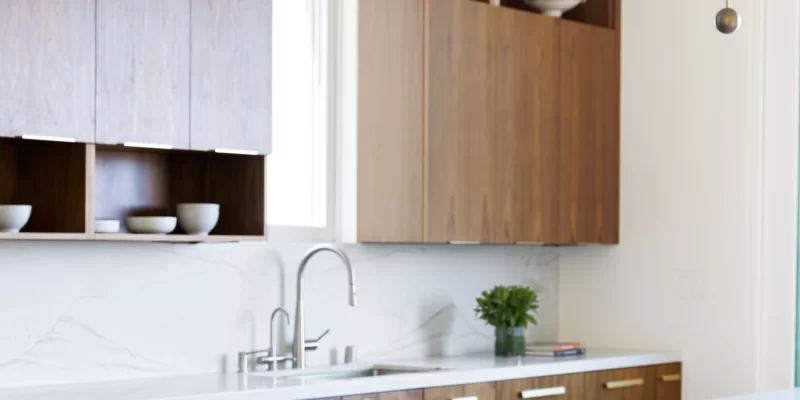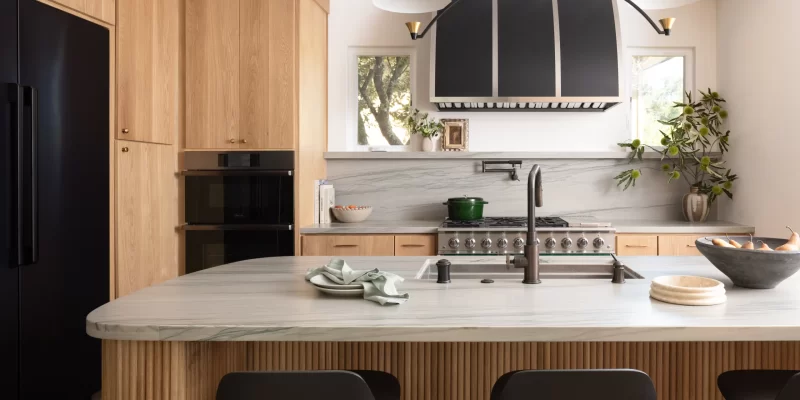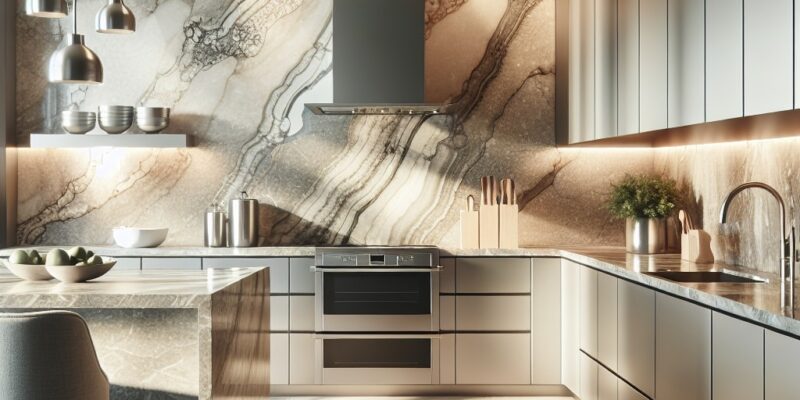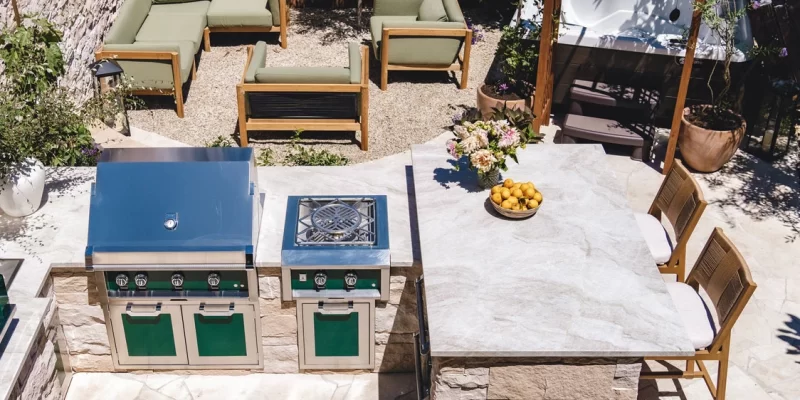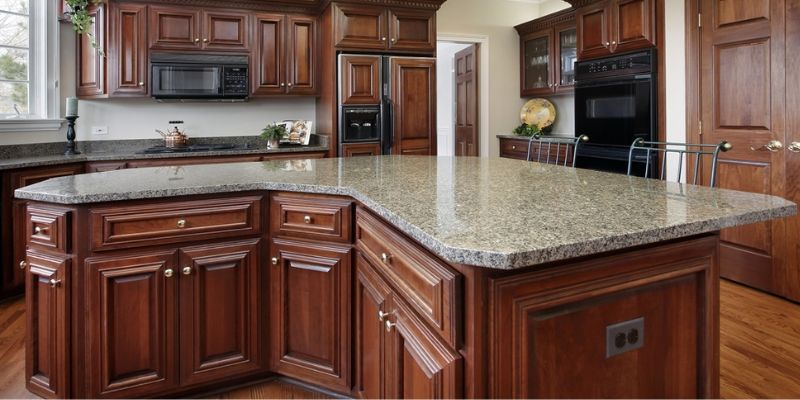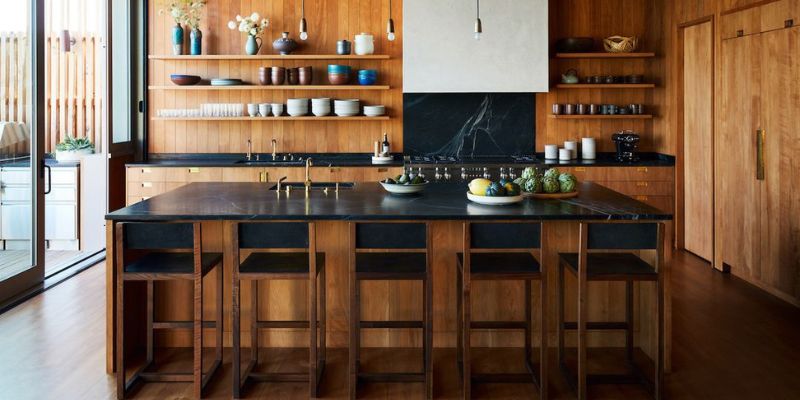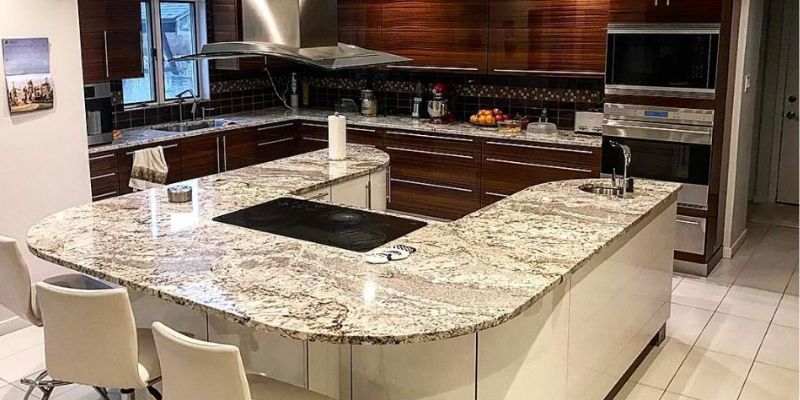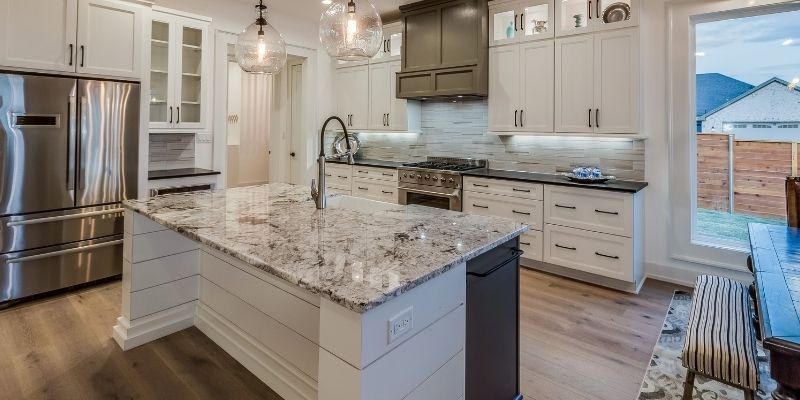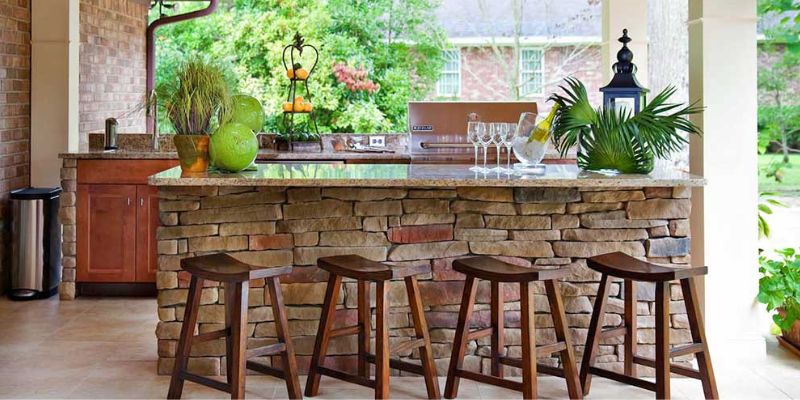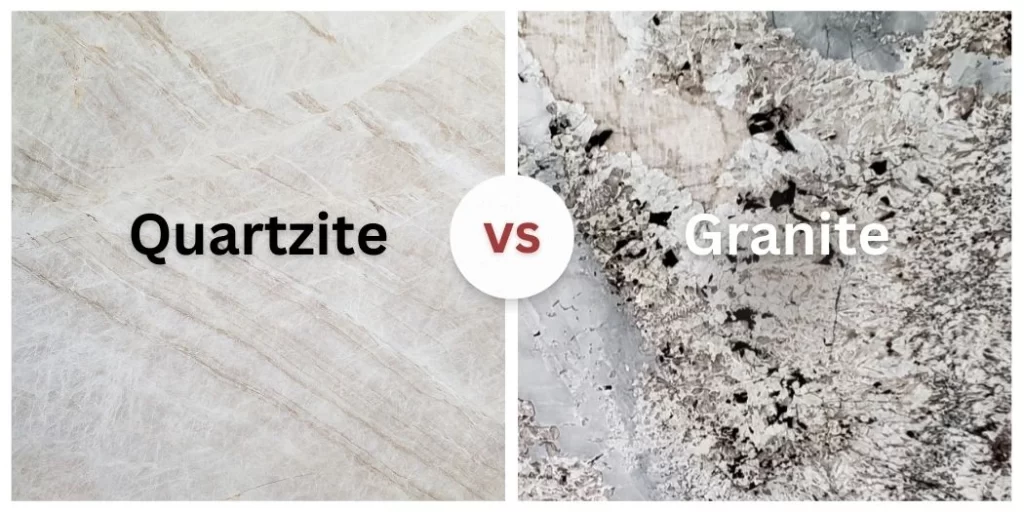
When it comes to selecting the ideal surface for your kitchen or bathroom, comparing quartzite vs granite countertops is essential. Both materials offer stunning beauty and impressive durability, but they also have distinct characteristics that may make one a better choice for your specific needs. Understanding the differences between Quartzite vs Granite Countertops can help you make an informed decision that you’ll be happy with for years to come.
Quick Comparison: Quartzite Vs Granite Countertops
Consider These Key Factors
- Budget: If cost is a primary concern, granite may be the better choice.
- Aesthetics: If you prefer a marble-like or updated look, quartzite might be ideal. For more varied patterns and colors, consider granite.
- Outdoor Use: For outdoor kitchens, both quartzite and granite can be used. It is important to consider filled areas in both stones and whether the area will receive direct sunlight.
- Maintenance: If you prefer less frequent sealing, granite might be more suitable.
- Durability Needs: For extremely high-traffic areas, quartzite’s slightly higher hardness might be beneficial
Comparison Table: Quartzite vs Granite COuntertops
| Feature | Quartzite | Granite |
| Hardness | 7 on Mohs scale | 6-6.5 on Mohs scale |
| Appearance | Marble-like, often lighter | Speckled, wide color range |
| Heat Resistance | Excellent | Excellent |
| Scratch Resistance | Very High | High |
| UV Resistance** | Excellent | Good |
| Maintenance | Moderate | Moderate |
| Cost | Higher | Lower |
| Sealing Frequency | More frequent | Annual |
What is Quartzite?
Quartzite is a natural stone formed when sandstone is subjected to extreme heat and pressure. This process results in a stone that’s incredibly hard and durable, often rivaling or even surpassing granite in terms of strength. It’s beauty and durability make it a popular choice for kitchen countertops
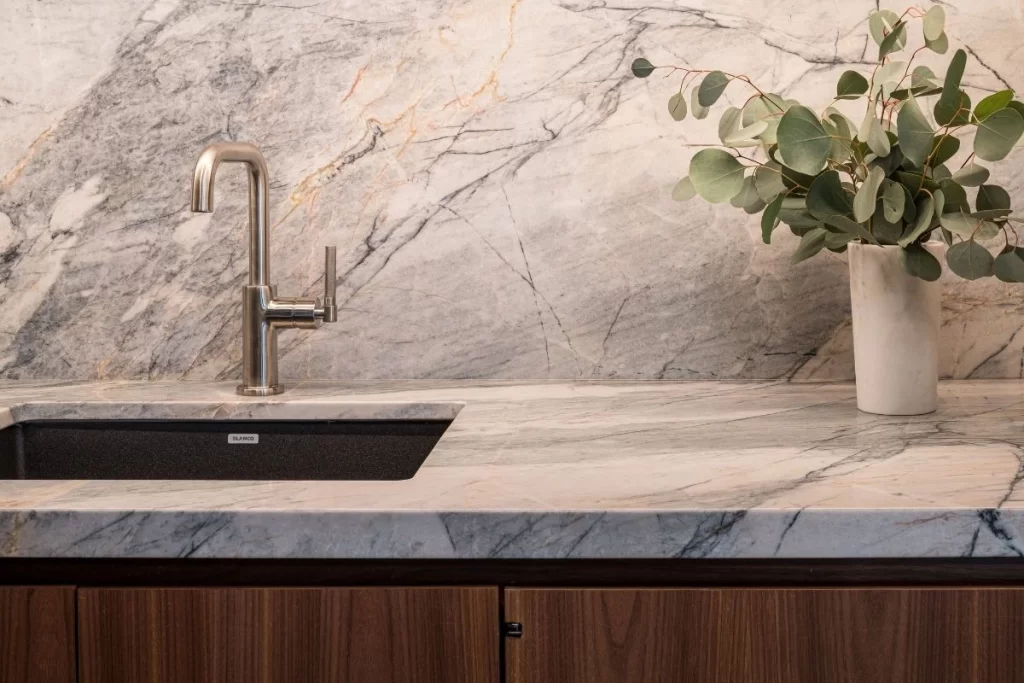
Ijen Blue quartzite wet bar. Design by Bette Abott. Photography © Adam Potts
Quartzite Colors and Patterns
Quartzite comes in light, airy colors with soft veining patterns, often resembling marble. Colors range from classic whites and grays to exotic hues like blue and gold, adding a luminous quality to your kitchen or bathroom.
Popular Varieties
Taj Mahal
A creamy white quartzite with subtle golden tones. Its neutral color palette makes it versatile for both modern and traditional kitchen designs.
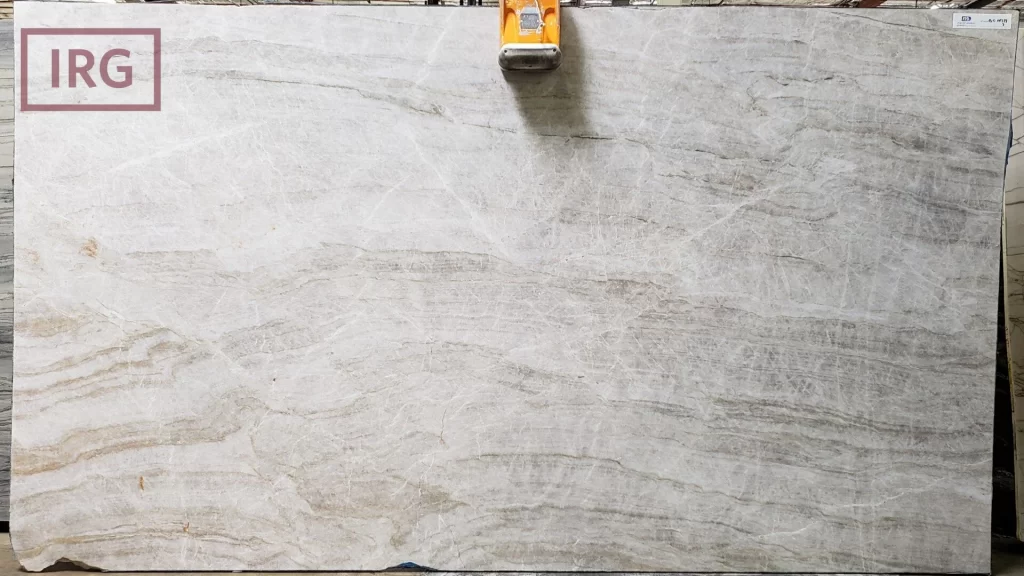
Mont Blanc
Features a gray or beige base with dark and light veining. This elegant look brings a sense of sophistication to any countertop or backsplash.
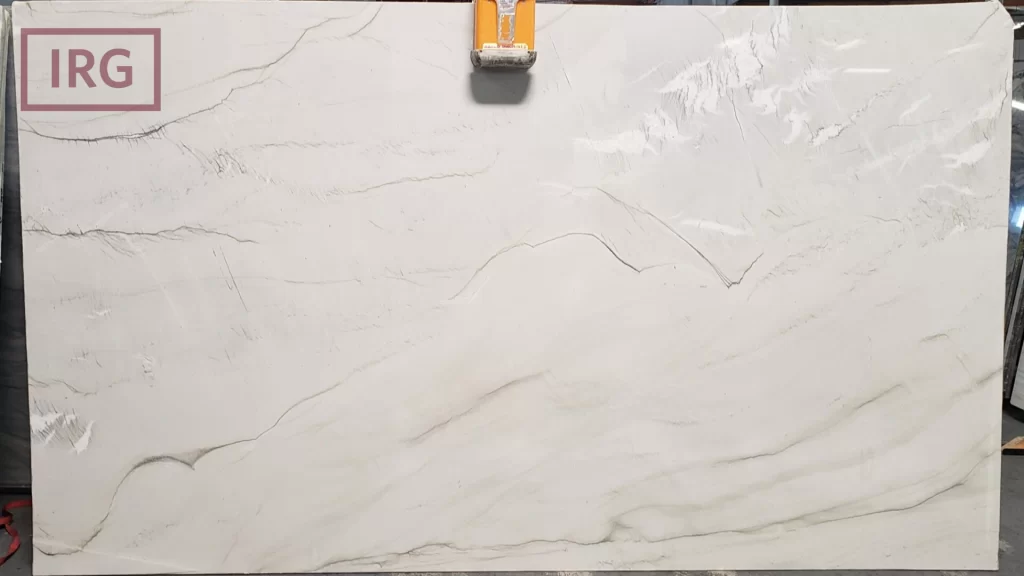
Ijen Blue
Displays light blue patterns with dark veins and warm accents. The unique blue tones add a bold, eye-catching element to any kitchen or bathroom space.
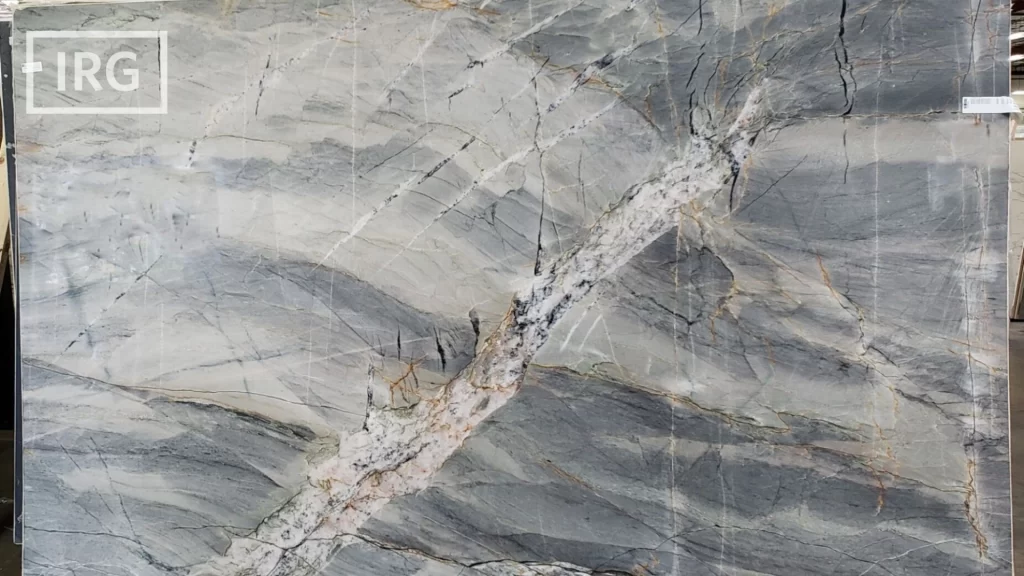
What is Granite?
Granite is an igneous rock formed from cooled magma deep within the Earth. It’s composed primarily of quartz, feldspar, and mica, giving it its characteristic speckled appearance.
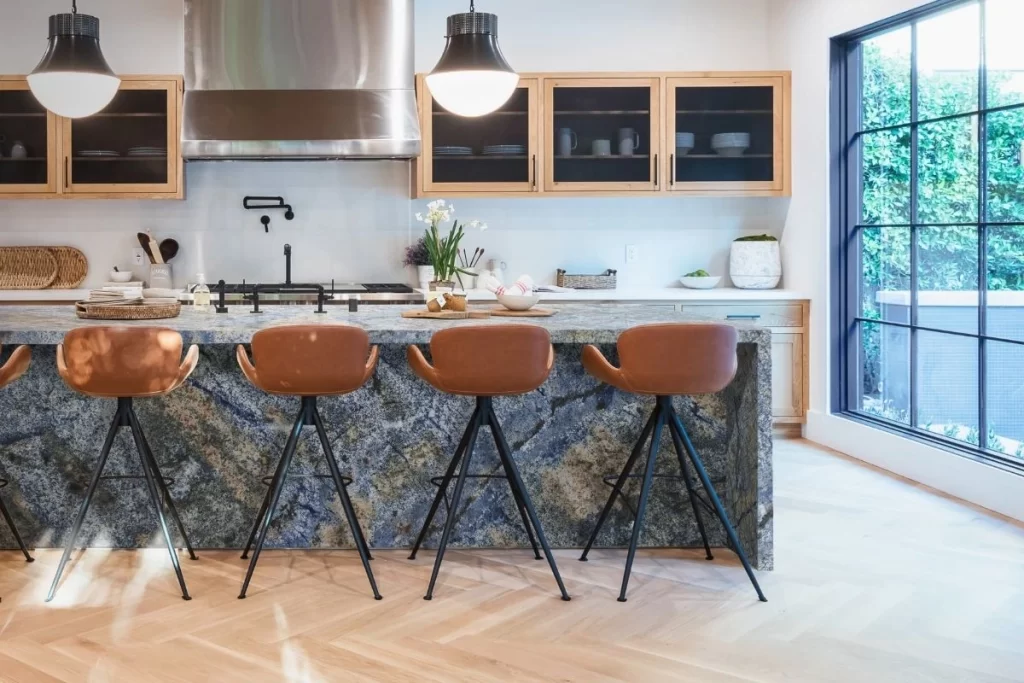
Azul Bahia Exotic Granite installed as waterfall kitchen island. Photography © Phil Reed
Granite Colors and PAtterns
Granite offers a wide range of colors and patterns, from subtle and uniform to bold and dramatic. Granite often has a flecked or speckled movement, as opposed to veining that stretches across the slab. Colors can include blacks, whites, grays, beiges, pinks, and even blues or greens.
Popular Varieties
Bianco Miramare
White and gray granite with hints of black and burgundy. Its soft, multi-tonal look complements various cabinetry styles, adding depth without overwhelming the space.
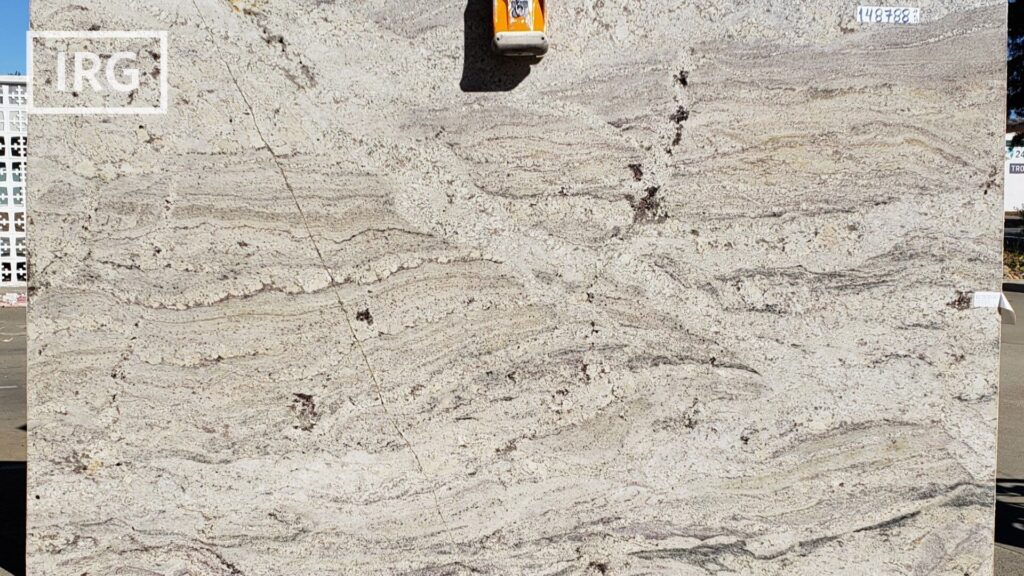
Costa Esmeralda
Green background with light veins and creamy undertones. This warm green shade brings a natural, earthy vibe, perfect for nature-inspired or rustic themes.
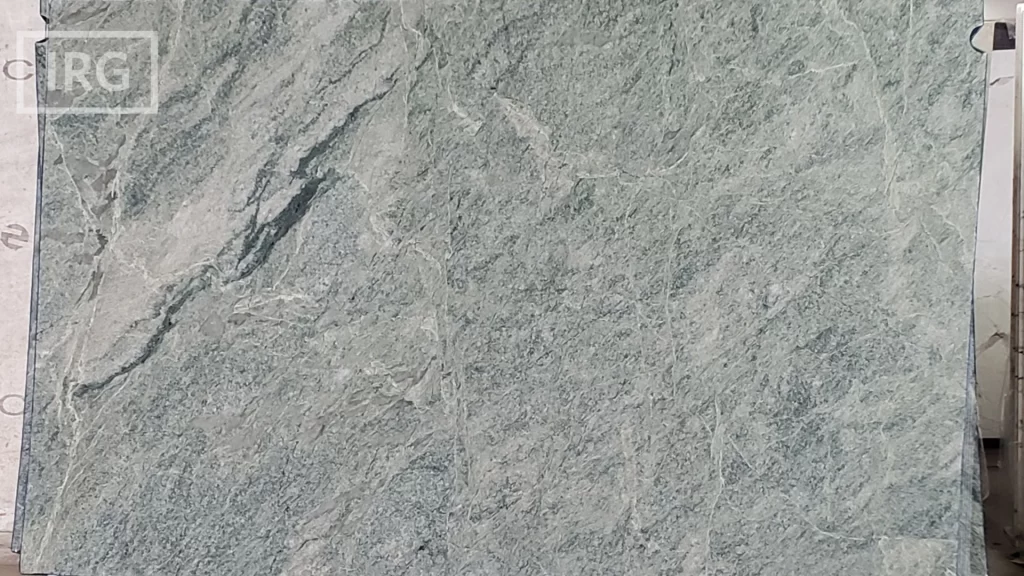
Azul Bahia
Deep blue with white, black, and brown accents. Known for its exotic appearance, Azul Bahia adds a luxurious, dramatic flair to high-end kitchens and statement pieces.
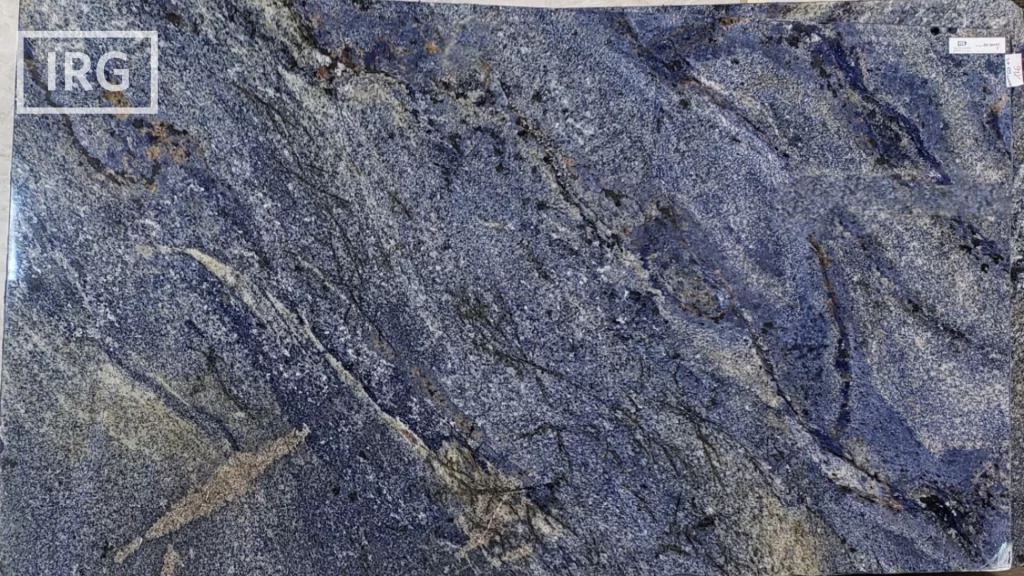
is Quartzite or Granite more durable?
Both quartzite and granite are known for their durability, but there are some differences:
Hardness
On the Mohs Scale of mineral hardness, quartzite typically ranks at 7, while granite ranks at 6-6.5. This gives quartzite a slight edge in scratch resistance, but with both materials ranking high on the scale, they are both highly durable and well-suited for use as kitchen countertops.
The Mohs Scale, developed by geologist Friedrich Mohs in 1812, measures the relative hardness of minerals. It ranges from 1 (softest, like talc) to 10 (hardest, like diamond). Each number represents a mineral that can scratch those with lower numbers. For context, a steel knife blade typically ranks around 5.5-6.5 on this scale.
Scratch Resistance
Both materials are highly resistant to scratches, but quartzite has a slight edge due to its higher hardness.
Heat Resistance
Both stones are heat-resistant, but it’s always recommended to use trivets or hot pads to protect the surface.
UV Resistance
Quartzite tends to be more UV-resistant than granite, making it a better choice for outdoor applications or areas with high sun exposure.
Decision-Making Factors
Maintenance and Care
Caring for quartzite and granite will have similar requirements:
Daily Cleaning
Use a soft cloth with mild soap and warm water for routine cleaning to keep your quartzite or granite countertop looking its best. Avoid harsh chemicals or abrasive cleaners, as they can damage the stone’s surface and dull its natural shine. For tougher spots, gently scrub with a soft brush or use a stone-safe cleaner specifically formulated for natural stone.
Sealing
Both stones should be sealed regularly to prevent staining. Granite typically needs sealing once a year, while quartzite may need it more frequently, depending on the exact quartzite, sealer, and general use.
Avoiding Damage
Use cutting boards and coasters to protect the surface from scratches and stains, preserving the natural beauty of your quartzite or granite countertop. Direct contact with acidic foods or heavy items can damage the stone, so always use protective layers when preparing food or placing beverages. This simple practice can help extend the life and appearance of your countertop.
Cost comparison of Quartzite vs Granite Countertops
Quartzite is often more expensive than granite due to its rarity and labor-intensive extraction. However, both materials can vary in price based on origin, color, and pattern. In the Bay Area you’ll like find the following pricing:
Factors influencing cost include:
- Stone origin and rarity
- Thickness of the slab
Installation Considerations
Both materials are heavy and require professional installation, so it is important to keep in mind the associated labor costs. Fabrication and installation can vary based on location, complexity of installation, and countertop edge profile chosen. Key considerations include:
Substrate strength
Ensuring that your cabinets or countertop base have the necessary substrate strength is essential for supporting heavy stone materials like quartzite and granite. Both quartzite and granite slabs are extremely durable but also quite heavy, so a sturdy foundation (often referred to as a Fabricator) is required to prevent warping or damage over time. It’s advisable to work with a professional installer who can assess your existing cabinetry or countertop base and recommend any reinforcements needed for a long-lasting installation.
Seam Placement
Seam placement is a key consideration in quartzite and granite countertop installations, especially for large countertop spaces or complex designs. Work with your Fabricator/Installer to strategically place seams in less noticeable areas, like near sink cutouts or edges, to create a seamless appearance. High-quality stone Fabricators can often match patterns and colors across seams, making them nearly invisible, so you get a flawless, cohesive look.
Edge profiles:
Choosing the right edge profile for your quartzite or granite countertop can enhance both its style and functionality. Edge profiles range from simple and sleek (like the eased or pencil edge) to more decorative options (like the ogee or bullnose), each adding a unique touch to your kitchen or bathroom design. Work with your installer to select an edge that complements your space and enhances the durability of the stone, as certain edges may be better suited for high-traffic areas.
Environmental Impact
While both stones are natural products, their extraction and processing can have environmental impacts:
Quarrying impact
The quarrying process for natural stones like quartzite and granite involves extracting large stone blocks from the earth, which can have significant environmental impacts. Quarrying requires energy and can disrupt local ecosystems, making sustainable quarrying practices essential. By choosing suppliers who prioritize responsible quarrying, you can help support more eco-friendly practices in the stone industry.
Transportation
Transportation of quartzite and granite slabs can significantly add to their carbon footprint, especially if the stone is imported from distant locations. Opting for stones that are quarried closer to home, like locally-sourced granite, not only reduces transportation emissions but also supports local businesses. This choice makes your countertop selection more environmentally friendly and aligned with sustainable practices.
Longevity
One of the greatest environmental benefits of quartzite and granite countertops is their exceptional durability, which minimizes the need for frequent replacements. These natural stones can last for decades with proper care, reducing waste and the environmental impact associated with disposal and reinstallation. Choosing a long-lasting material like granite or quartzite is an investment in sustainability for eco-conscious homeowners.
Design Versatility and Applications
Quartzite and granite are versatile materials suitable for various applications:
- Kitchen countertops
- Bathroom vanities
- Outdoor kitchens
- Fireplace surrounds
- Bar tops
Both can work well in various design styles, from traditional to contemporary, depending on the specific variety chosen.
Common Design Styles
Both quartzite and granite can complement a wide range of interior design styles. Here’s how they typically fit into various popular aesthetics:
Quartzite Styles
- Modern and Contemporary:
Love clean lines and a sleek vibe? Quartzite’s light colors and subtle veining are perfect for modern spaces. Whether you go for white or soft gray, quartzite adds a touch of elegance while keeping things minimal and sophisticated in kitchens and bathrooms. - Transitional:
Not quite sure if you’re into traditional or modern? Transitional design is all about blending the two, and quartzite nails it with its soft patterns and gentle veining. It’s the perfect way to bridge that gap and create a look that feels both timeless and fresh. - Scandinavian:
For those who appreciate simplicity and bright, airy spaces, quartzite in white or light gray is a great choice. Its clean lines and light tones match Scandinavian design’s love for natural light and minimalist beauty, adding functionality without sacrificing style. - Luxury or High-End:
Looking to make a bold statement? Quartzite with striking veining and rich colors like deep blue or gold turns any space into a luxurious retreat. It’s perfect for high-end kitchens or bathrooms where opulence is the goal, adding that “wow” factor with ease. - Beach or Coastal:
Beach style embraces light, breezy tones, and quartzite in soft blues or sandy colors fits perfectly. Not only does it capture the feel of the ocean, but it’s durability suits coastal spaces, bringing the colors of the ocean indoors while withstanding the elements. - Outdoor Kitchens:
Speaking of the outdoors, quartzite is a rockstar for outdoor kitchens. Its durability and UV resistance mean it holds up beautifully in the sun, and with earthy tones, it blends right into natural surroundings, giving your space a stylish and functional upgrade.
Granite Styles
Granite is a go-to for all kinds of designs, bringing both durability and beauty to the table (or rather, countertop). Here’s how granite can fit into different popular styles:
- Traditional:
If you love a classic look that never goes out of style, granite fits perfectly in traditional kitchens. Think warm tones like beige, brown, or white—these colors add a touch of elegance and durability while pairing beautifully with traditional cabinetry for that timeless appeal. - Mid-Century Modern:
Mid-Century Modern is all about clean lines, functional design, and a stylish flair. Granite countertops, especially in muted or earthy tones, complement this retro-inspired look. Pair granite with wood cabinetry and vintage accents to nail that chic, mid-century vibe. - Art Deco:
Feeling bold? Art Deco is all about luxury and drama, with strong geometric patterns and high contrast. Granite in striking colors or with dramatic veining fits right in, adding a luxurious touch to any Art Deco kitchen or bathroom. If you’re looking to make a statement, polished granite in bold hues will do the trick. - Contemporary:
Contemporary design is all about simplicity and sleekness, and granite is a natural fit. Go for granite in shades of gray, black, or white with subtle patterns for a clean, sophisticated look. It’s a great way to add a bit of luxury without overpowering a minimalist space. - Outdoor BBQ Areas:
Granite might not be as UV-resistant as quartzite, but it’s still a solid choice for outdoor kitchens—especially in covered areas. Its durability makes it perfect for handling changing weather. Earthy tones like brown or gray blend beautifully with natural surroundings, giving your outdoor BBQ area a rugged, stylish edge.
When evaluating quartzite vs granite countertops, consider not only your current design style but also the long-term versatility of the material. Both stones offer options that can adapt to changing design trends, ensuring your countertops remain stylish for years to come.
Impact on Home Value
Installing high-quality natural stone countertops can positively impact your home’s value. Both quartzite and granite are viewed favorably in the real estate market, with their durability and timeless appeal being key selling points.
Final Thoughts on Quartzite vs Granite Countertops
Both Quartzite and Granite are excellent choices for beautiful and durable countertops. Deciding which natural stone countertop is best depends on your unique needs, style preferences, and budget. By weighing the pros and cons outlined in this guide, you’ll be better prepared to choose the best option for your home. Remember, it’s always beneficial to view slabs in person, as natural stone can vary significantly, ensuring you find the perfect match for your space.
